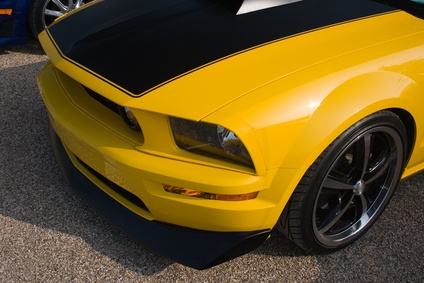
Drag racing consists of two cars speeding in a straight line over the same amount of distance. During a drag race, every car will have a different launch technique. To find the best technique for your car, you need to experiment with your car and be conscious of changes to your setup, the tarmac quality and the weather conditions. But you can narrow the types of car launch techniques down to deciding two factors: transmission type and drive-wheel type.
With a manual transmission, the fastest launch from a dead stop involves slipping the clutch and spinning your wheels. To determine how much slipping is need, experiment with your car by holding the throttle at various revolutions per minute at launch. You want to avoid pressing the throttle too much, which creates excessive wheel spin, but you also don't want to press the throttle too little and risk bogging down the motor. You need to get the throttle into just the right position at the launch and maintain it until you cross the finish line.
To launch a car with an automatic transmission, you want to keep the car immobile by flooring the brakes with your left foot while revving the motor with your right foot. This brake-torquing technique builds up a power boost before launch and decreases turbo lag. Be aware that this puts a lot of stress on your transmission, and the build-up of heat from that stress can destroy your automatic gearbox.
If you are drag racing a car with front-wheel drive, install wheelie bars. Cars with front-wheel drive tend to lose traction and spin the front wheels. This happens because sudden acceleration moves weight from the front wheels towards the rear wheels. To prevent this, install wheelie bars in the back of your car. Once you've done that, launch your car with low throttle to prevent excessive wheel spin. According to the Modern Racer website, gradually increase your throttle as you gain traction.
When launching a car with rear-wheel drive, be aware that your car has more traction off the starting line, and you don't have to worry about spinning your wheels. This means you can use more throttle than with a front-wheel drive car. You also want to slip the clutch more to prevent the motor from bogging down.
Since all-wheel-drive vehicles have zero wheel spin when at a nearly full-throttle launch, you can liberally apply your throttle. Just be aware that these types of full-throttle launches put strain on the clutch and drive train. When combined with an automatic transmission, cars with all-wheel drive are the easiest to launch, according to Modern Racer.